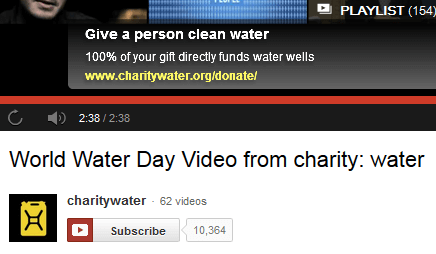Why video needs to be part of your paid advertising strategy


Recently, I’ve been thinking about the importance of online video content. People are now consuming more videos, and it makes up a huge portion of online content. A post from Convert With Content spells out this growth, citing several stats, including:
- 74 percent of all Internet traffic will be video by 2017.
- Video is shared more than any other kind of content.
- YouTube is the second-largest search engine in the world.
- Around 8,333 Vine videos are shared each minute.
- 33 percent of tablet owners watch about an hour of video on their devices every day.
- Video in email can boost open rates by 20 percent and increase click-through rates two to three times.
Video is becoming more and more relevant — so why not come up with some paid strategies now? In this article, I’ll suggest ways to incorporate video strategies into your online advertising programs. I’ll cover Google in particular, but similar ideas can be implemented in other channels.
Video remarketing
Video remarketing is a useful strategy to help you reconnect with people who’ve previously interacted with specific videos or a YouTube channel. Advertisers can specifically reach people who have:
- watched any videos;
- liked, disliked, commented or shared videos;
- viewed a video as a TrueView (in-stream) video ad; or
- visited or subscribed to a specific YouTube channel.
Various ad formats (text, image and rich media ads) are available on the Google Display Network. To video remarket, your YouTube account and Google AdWords account must be linked.
As one example of this in action: You could aim to sell specific brake parts to a do-it-yourselfer who watched a video on how to replace motorcycle brakes.
In the past, we erroneously thought that people would watch this type of video post-purchase to help install products they bought. But now more than ever, many DIY folks watch videos pre-purchase to gauge if problems are easy to solve, and then they go on to make their purchases.
With this type of video, it’s important to nail user intent, as intent could be almost anything. The more interactions with your site, brand, product and so on, the more likely folks are interested in the product or service you’re selling. We’ve seen tremendous success when we’ve remarketed to:
- people who have viewed more than two pages on a site; and
- those who’ve watched a video (in this case, a video on how to replace motorcycle brakes).
To add extra spice, we like to target broad terms like “brakes” or “part.” We can safely use broad terms, as the audience has been prequalified by the previous actions they’ve taken on the site.
We also layer in relevant topics, interests, demographics and so on. In the motorcycle example, we layered in men and DIYers.
Additionally, people who use voice search are more likely to ask questions like, “How do I fix X” or “How do I solve Y,” so it’s a perfect way to capture the growing number of voice searches.
Voice searches are also more than three times more likely to be local. This can naturally encourage people to walk into a nearby store and make a purchase.
TrueView for shopping (or shoppable TrueView)
With this, Google Shopping results display in a carousel alongside the video. You can choose specific products or layer in dynamic remarketing so that people are seeing products they’ve previously viewed on your site. Here’s an example of what this ad unit looks like:
Fifty percent of YouTube views come from mobile devices, and many people view videos while on the go. This also encourages people to walk into a store nearby and make a purchase.
This naturally presents a big opportunity for Google and advertisers alike. To date, the CPAs (cost per actions) we’ve achieved with this advertising are a little on the high side but don’t account for people who may choose to buy later or from an offline retailer.
This could be because it’s a new product or because this type of advertising doesn’t inherently work well. If successful, I think we could see much more of this, and we could soon be able to purchase goods directly from TV with a product like Google shoppable TV.
If the above is not readily available to you, you can always place Call To Action Overlays (CTAO) over ads to direct people to a product featured in your video and on your website. In Google AdWords, ads do not have to be running for the CTAO ad to show. CTAO can be set up in the Gooogle AdWords or YouTube interface. Here’s an example:

Display product lightbox
When you hover over a display ad, it expands out (sometimes taking up the majority of a page) and can show 12 to 30 products from your Google Merchant Center (GMC). It works with the GMC feed and is available for advertising in the display network only.
This ad can also include videos, coupons, catalogues or games (embedded). By hovering over the ad, people are able to take immediate actions like watching a video or looking at a catalogue. The billable action is the user engagement, which is when someone hovers over the ad. Here’s an example of what this looks like:

Again, we’ve seen higher CPAs than on the search, but higher CPAs and lower CTRs are quite normal for display advertising. Advertisers just need to figure out how this type of advertising fits into their overall marketing plans and objectives.
Currently, there are a lot of video opportunities on the display side. In the future, I expect to see more video advertising opportunities on the search side and incorporated into Google Shopping.
Feel free to share your own video strategies on Marketing Land’s Facebook, Twitter or LinkedIn Group!
From our sponsors: Why video needs to be part of your paid advertising strategy



